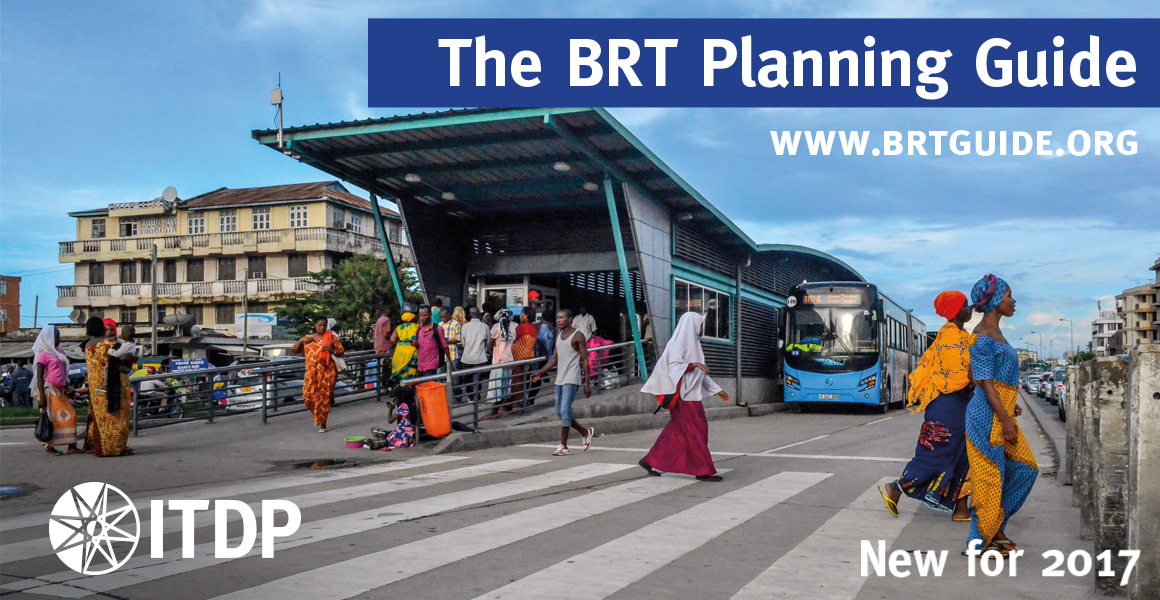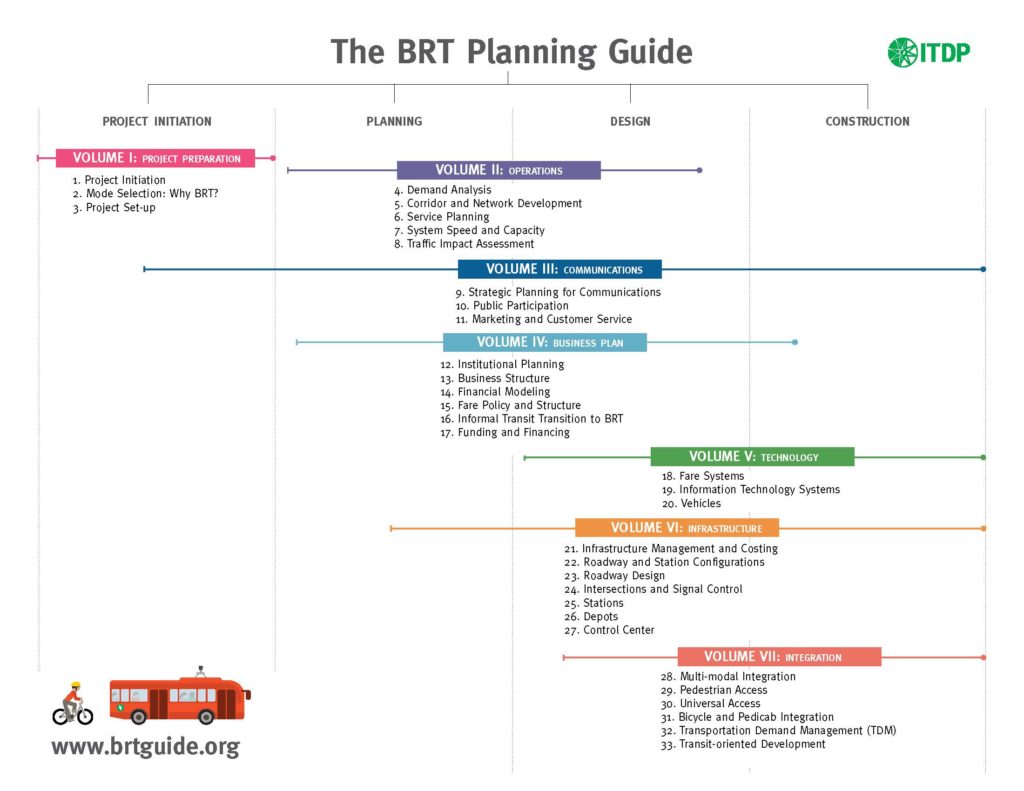
For a more in-depth look at the BRT Planning Guide, be sure to RSVP for one of our webinars. Details can be found here.
ITDP is thrilled to announce the launch of the new BRT Planning Guide, the most comprehensive resource there is for planning a bus rapid transit (BRT) system. Over seven volumes and 33 chapters, the guide provides best practices and technical assistance from planning a system to maintaining it.
 Beginning with an overview of BRT, the Planning Guide proceeds to give a step-by-step description of the planning process, including operational design, financial modeling, physical design, multi-modal and land use integration, business plan development, communications and marketing, contracting, vehicle and fare collection technology, evaluation, and implementation.
Beginning with an overview of BRT, the Planning Guide proceeds to give a step-by-step description of the planning process, including operational design, financial modeling, physical design, multi-modal and land use integration, business plan development, communications and marketing, contracting, vehicle and fare collection technology, evaluation, and implementation.
The guide is intended primarily for planning and engineering professionals, but can be useful to anyone interested in any aspect of planning, advocating for, or supporting high quality mass transport systems, as it covers aspects such as policy, communications, and best practices in institutional structure.
The fourth edition of the guide has been ten years in the making, and is a fully online, searchable document that includes contributions from a wide range of professionals and practitioners with direct experience in designing, building and managing BRT systems all over the world. Earlier versions of the guide were used to assist in the planning of many BRTs, including the Tehran BRT in Iran, and the Rea Vaya BRT in Johannesburg, South Africa.
 BRT systems have proven to be catalysts for transformation of cities to more livable and people-friendly environments. BRT has grown hugely in popularity over the last decade. An appeal of BRT is the ability to deliver a high-quality mass transit system within the budgets of most municipalities, even in low-income nations.
BRT systems have proven to be catalysts for transformation of cities to more livable and people-friendly environments. BRT has grown hugely in popularity over the last decade. An appeal of BRT is the ability to deliver a high-quality mass transit system within the budgets of most municipalities, even in low-income nations.
The guide is live at brtguide.org, and will be an updated and dynamic resource. ITDP is looking to create a community of collaborators to refine this resource as standards and best practices evolve. If you are interested in joining us in this effort, get in touch at brtguide@itdp.org.
ITDP is grateful for the support of ClimateWorks Foundation and the Hewlett Foundation. We also want to thank GiZ for their continued support of the BRT Planning Guide, as well as Barr Foundation.
